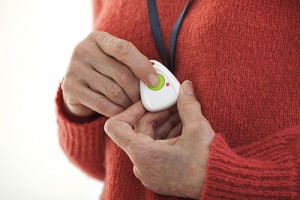 With football season still squarely in the rearview mirror, my thoughts this week have been on architecture and technology. Fortunately, my first choice for incredible architectural breakthroughs is the new Atlanta Falcons’ football stadium.
With football season still squarely in the rearview mirror, my thoughts this week have been on architecture and technology. Fortunately, my first choice for incredible architectural breakthroughs is the new Atlanta Falcons’ football stadium.
Oculus Roof
The new Atlanta Stadium—a $1.2 billion project that is currently being built—will have a roof that opens and closes like a camera shutter. The roof will have eight petals that open in eight minutes to create an open-air stadium. When open, the roof will look like a flower from above. In addition, the developers plan to meet the highest LEED certification through solar panels and floor-to-ceiling windows in one end to allow for more natural light. Besides having electric car charging stations, the stadium will feature a “Technology Lounge” allowing fans to access digital media (including fantasy football) while watching the game.
Technology in Homebuilding
I have written in the past about the smart home that integrates different functions such as heating, lighting, security, sound, and even appliances like washers and dryers into one remotely accessible network. These are designed to make it easy to manage the home system from one device. The latest push is to create a network standard where all devices will talk together, similar to the office networking standards developed years ago.
Another use of technology in architecture is high-tech windows. My wife and I built our home 20 years ago and were careful to install low-E argon filled windows. We have a lot of windows to take advantage of passive solar light and heat. These windows have kept our heating bill low over the years. One of the new types of windows, however, would have saved us even more money. This special glass made by GlassX employs a phase change material (PCM) to detect the type of solar radiation and light coming through the window. It has the ability to store excessive heat in a substrate embedded in the window and can then release that heat into the structure during cooler night-time temperatures. This technology has been used in commercial buildings and is scaling now to home use. These windows and similar innovations are all aimed at reducing home energy consumption.
Bluetooth Enabled Toilets
One of the more interesting examples of advances in home technology is the Bluetooth-enabled toilet by Kohler. You can stream music from any device to the built-in speakers. You can also choose between eight different colors of ambient light and warm the seat via the remote control. The toilet opens and closes automatically and has an integrated bidet with regulated water temperature, set through the remote control. All of this will only add $6,338.50 to your building or remodeling budget!
Thoughts
A common thread in architectural innovation is sustainability. You see this in the push for LEED certification, and you see it in the individual products that are coming to market. Even the toilet mentioned previously is doing its part by promoting low water usage. These innovations are designed to reduce consumption of natural resources but at the same time provide us with conveniences and control over our environment. This looks like a sustainable business model to me. What do you think?
Kelly Brown is an IT professional, adjunct faculty for the University of Oregon, and academic director of the UO Applied Information Management Master’s Degree Program. He writes about IT and business topics that keep him up at night.


